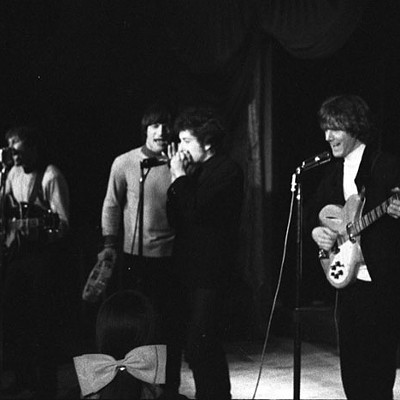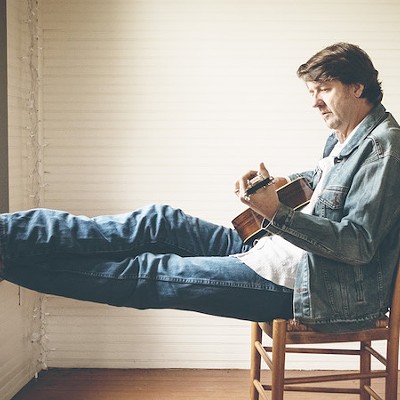Support Us
Houston's independent source of
local news and culture
account
- Welcome,
Insider - Login
- My Account
- My Newsletters
- Contribute
- Contact Us
- Sign out
[
{
"name": "Related Stories / Support Us Combo",
"component": "11591218",
"insertPoint": "4",
"requiredCountToDisplay": "4"
},{
"name": "Air - Billboard - Inline Content",
"component": "11591214",
"insertPoint": "2/3",
"requiredCountToDisplay": "7"
},{
"name": "R1 - Beta - Mobile Only",
"component": "12287027",
"insertPoint": "8",
"requiredCountToDisplay": "8"
},{
"name": "Air - MediumRectangle - Inline Content - Mobile Display Size 2",
"component": "11591215",
"insertPoint": "12",
"requiredCountToDisplay": "12"
},{
"name": "Air - MediumRectangle - Inline Content - Mobile Display Size 2",
"component": "11591215",
"insertPoint": "4th",
"startingPoint": "16",
"requiredCountToDisplay": "12"
}
,{
"name": "RevContent - In Article",
"component": "12527128",
"insertPoint": "3/5",
"requiredCountToDisplay": "5"
}
]
Petty: The Biography
By Warren Zanes
Henry Holt, 336 pp., $30
You would think that Tom Petty had it all in the mid to late ‘90s. On the backside of his forties, he had already enjoyed massive success for nearly two decades with a slew of hits — both with his longtime band the Heartbreakers and solo — as well as sold-out concerts and a rabid fan base.
But reeling from a bitter divorce, band tension, and a sort of ennui about the state of his career, Petty retreated to a two-room house friends called a “chicken shack.” There he became a heroin addict for several years, something that a traditional “Behind the Music” narrative would usually peg for a much younger man earlier in his journey.
That admission — and Petty’s first time talking about it — has become the headline-grabbing revelation of this book. Nevertheless, Petty is actually a thorough, well-written, and expansive (albeit too short) look at the life and career of one of America’s most enduring and true post-‘60s rock stars. More than any other source, this book digs deep into Petty’s childhood, teenage years and pre-fame life, including his troubled childhood in Gainesville, Florida — Petty’s alcoholic father could be abusive; his fragile mother died young.
And while he had brief stints working as a dishwasher, meat cutter, groundskeeper and even in a funeral parlor, the ambitious and single-minded Petty was hellbent on a career as a professional musician. It was this drive – and a hint of aloofness – that made him the natural leader and driving force of the Heartbreakers, always either a benevolent dictatorship or skewed democracy with Petty at the helm.
The band's first hit, “Breakdown,” did not make an impact on airwaves and the charts until a year and a half after its initial release. And while often grouped musically with other angry/quirky young front men with backing bands, Tom Petty and his music was actually like none of them.
“Something in the new music reminded us of what we liked about the old stuff," Zanes writes in the introduction. "But Petty seemed to connect those two worlds better than anyone. Not the intellectual gymnast that Elvis Costello was, never as grandly romantic as Springsteen or as simultaneously strange and canny as the Talking Heads, Petty nonetheless got in there a little deeper than the others.”
Zanes admits he’s not the most objective biographer. A Petty superfan, he also opened shows for the Heartbreakers as the singer/guitarist for the Del Fuegos in the ‘80s. Since then, he’s carved out a career as a well-regarded teacher and music journo, and his indie book on Dusty Springfield brought him back into Petty’s orbit (as well as inspired a bizarre encounter with Diana Ross).
So Zanes conducted no-holds-barred interviews with Petty over a series of years, though ceding no control over the final editorial to his subject. He also spoke for the book with a wide and deep range of people including most of the Heartbreakers and members of Petty's previous bands like the Epics and Mudcrutch, as well as producer Jimmy Iovine, Stevie Nicks, family members, music execs, roadies, other performers and many more.
Nicks’ comments about their long, deep, and seemingly platonic bond are particularly revealing. She repeats the story that she would have gladly left Fleetwood Mac to join the Heartbreakers if Petty would have asked. His “Stop Draggin’ My Heart Around” duet partner even acted as sort of go-between for Petty and his first wife, Jane, through their tumultuous marriage that ended in divorce and despair.
That the ladies had a particular fondness for cocaine undoubtedly added to their gal-pal bond. Petty has since remarried to Dana, whom he credits with practically saving his life.
In fact, these first-person interviews are the book’s greatest strength. He even gives ousted drummer Stan Lynch — who has often been less than complimentary about Petty to the press — ample room to vent and share his side of the story. Both men charter their fraught, roller coaster relationship which continues to this day.
Zanes has a cohesive and well-thought-out writing style. But if the book has a weakness, it’s just simply not long enough. The interview observations sometimes crowd out the factual history that readers will look for. Creations of albums and tours whiz by at a quick pace. And Petty’s entire involvement with his late-'80s supergroup the Traveling Wilburys is dismissed in a single page.
Wilburys George Harrison (who became a close friend), Bob Dylan (who the Heartbreakers backed on two tours), and ELO head man Jeff Lynne (whose production buoyed both Petty’s solo and group albums) appear elsewhere in the narrative, as do a host of other A-list rockers. But this is just one area that Zanes could have explored with a bigger page count.
Tom Petty has been the subject of a biography before, one in which he also collaborated with the author (Thom Zollo’s fine 2005 effort Conversations with Tom Petty). But thanks to its breadth and inclusion of many more voices, Petty is likely to stand as the definitive work.
KEEP THE HOUSTON PRESS FREE...
Since we started the Houston Press, it has been defined as the free, independent voice of Houston, and we'd like to keep it that way. With local media under siege, it's more important than ever for us to rally support behind funding our local journalism. You can help by participating in our "I Support" program, allowing us to keep offering readers access to our incisive coverage of local news, food and culture with no paywalls.
Bob Ruggiero has been writing about music, books, visual arts and entertainment for the Houston Press since 1997, with an emphasis on classic rock. He used to have an incredible and luxurious mullet in college as well. He is the author of the band biography Slippin’ Out of Darkness: The Story of WAR.
Contact:
Bob Ruggiero
Trending Music
- Country Rock Thrives with Gene Clark and Flying Burrito Brothers for Record Store Day
- Bruce Robison Is The Eternal Song Hunter
- Top 10 Butt-Rock Bands of All Time
-
Sponsored Content From: [%sponsoredBy%]
[%title%]

Don't Miss Out
SIGN UP for the latest
Music
news, free stuff and more!
Become a member to support the independent voice of Houston
and help keep the future of the Houston Press FREE
Use of this website constitutes acceptance of our
terms of use,
our cookies policy, and our
privacy policy
The Houston Press may earn a portion of sales from products & services purchased through links on our site from our
affiliate partners.
©2024
Houston Press, LP. All rights reserved.





